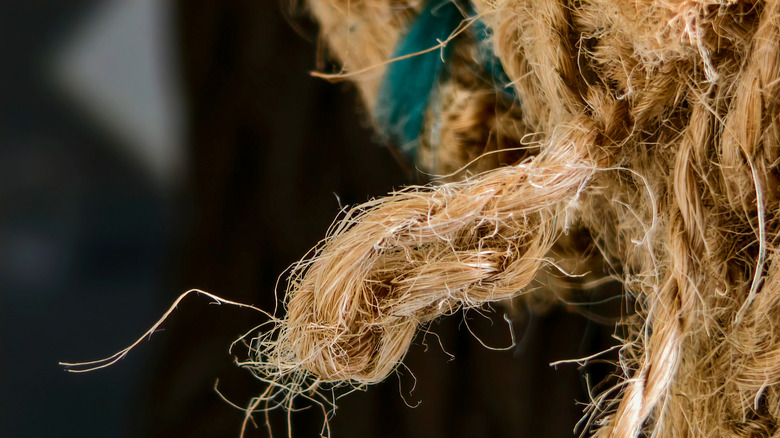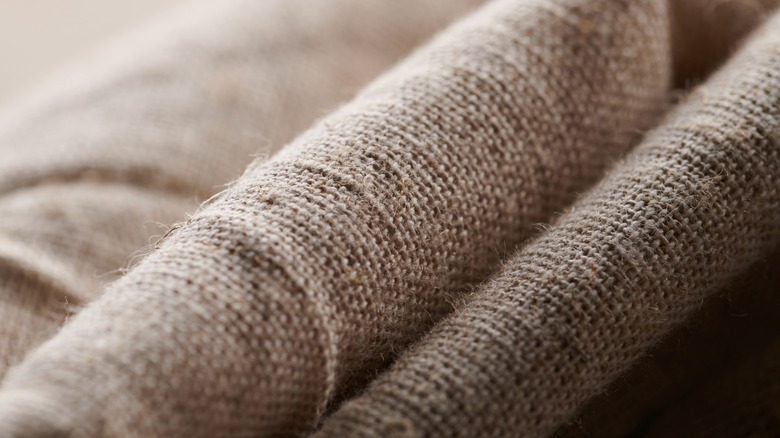What's The Difference Between Jute And Burlap? (And Which Is Right For Your DIY Project)
Jute and burlap aren't quite the same thing, but it's not surprising that many people think otherwise — the terms are often used interchangeably, and they're closely related. When shopping, though, it's important to know exactly what to look for so you can get the right materials, particularly for DIY projects. In short: while jute is a type of fiber, burlap is the coarse fabric often made from that fiber. One is the raw material, the other is the product, like lemons and lemonade.
Jute is one of the oldest fibers in the world; aside from cotton, it's the cheapest and most abundant natural fiber available. Made from a plant of the same name, these fibers are long and soft, yet very strong. The texture is coarser than cotton, though it's often treated to have a smoother finish, and it tends to shed easily.
DIY shoppers can buy jute in the form of yarn, twine, or rope. Its strength makes it ideal for projects like jute rope lighting fixtures or plant hangers, and it's a popular rug material. Jute is also woven into a range of textiles, sometimes blended with other materials like cotton to make it softer. (Often, fabrics made from jute are also called "jute," which can be a source of confusion.) It's often used for carpet backings, upholstery, bags, nets, and other products. But most often, jute is woven into burlap.
How burlap is different and how to use it
Burlap is a fabric with a coarse, porous weave. It's most often made from jute, but it can be made from other fibers as well, like sisal and hemp. When made from jute, it has a similarly coarse feel, but it's heavier and rougher. Despite being breathable, it's incredibly durable and tear-resistant.
Compared to other jute products, burlap has a wider range of uses for DIYers since it's already in fabric form. It's ideal for any project where you need a sturdy material and don't mind the rough feel. It's commonly used for upholstery, bags, and rustic home decor, as well as various gardening tasks. For example, you can line your flower pots with burlap or use burlap to prevent weeds. On the other hand, you may not want to use burlap to create clothes that will sit on your skin directly. Burlap is usually sold in its raw, beige color, but it can be dyed as well.
When burlap is made from jute, the two share a lot of commonalities aside from their form. They are both environmentally friendly materials with relatively low impact, as they don't use a lot of resources to produce. Additionally, both burlap and jute can only be hand-washed and are not heat-safe. Lastly, both of these materials are versatile, sturdy, and long-lasting.

